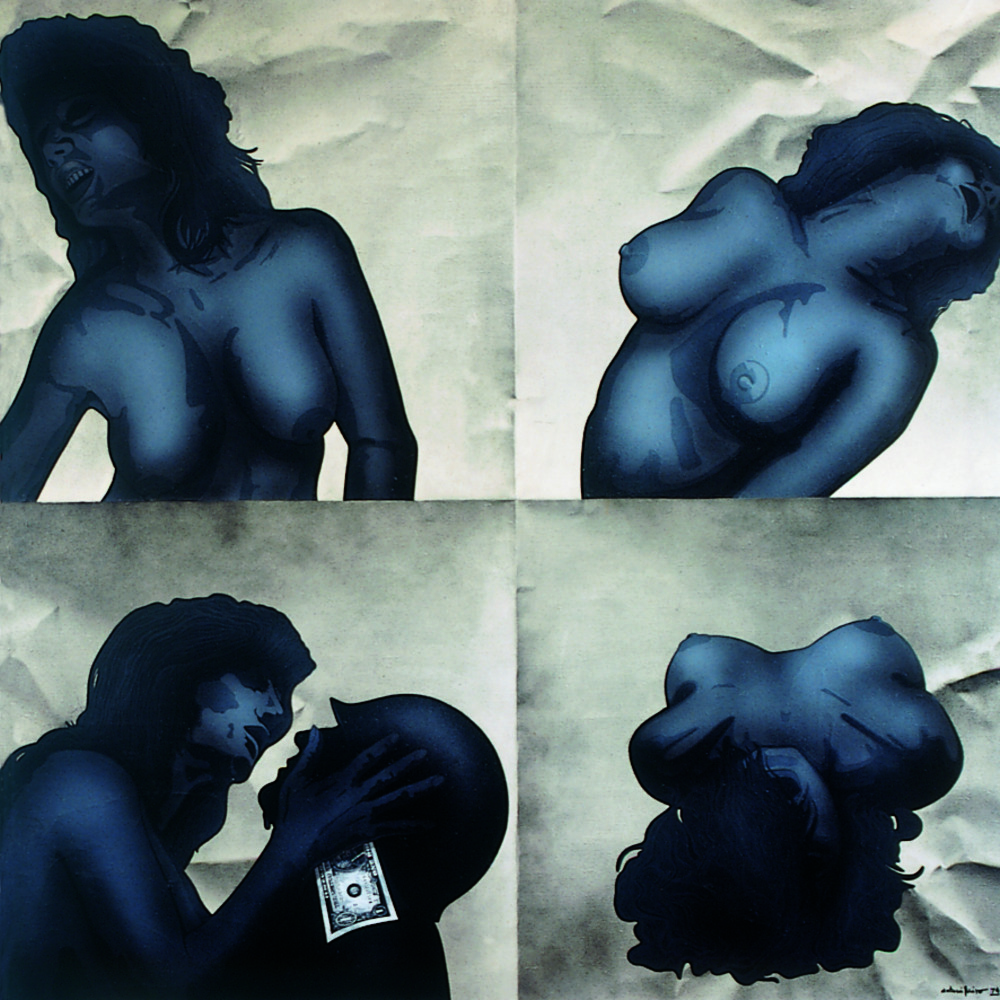Una noia i un soldat (A girl and a soldier)
This work falls into two thematic areas typifying the development of Antoni Miró’s pictorial discourse: political-social denunciation and eroticism. It belongs to “The Dollar” series, through which the author scathingly criticises Capitalism and US Imperialism in the first half of the seventies, which coincided with the Oil Crisis and the last stages of the Vietnam war.
This period of the artist’s career is characterised by Miró’s blistering denunciations. Adopting some of the approaches used by Pop-Art (in its non-American variant, as Blasco Carrascosa is quick to point out), mass-media aesthetic strategies are harnessed to come up with a specific chronicle of the world. The choice and individual treatment of the message-carrying elements are complemented by heightened expressiveness through interpretation of the new technological processes emerging in the graphics industry at the time.
A neutral background that looks like crumpled paper gives a certain depth of field and helps articulate the inner boundaries. The canvas is divided into four quadrants, each of which contains a black and white image. Yet there is an overall unity of style that is achieved through the same gestural resources, the representative economy and, in particular, the condition of temporality.
The latter factor is clearly incorporated into this unusual polyptych in which the images form film-like frames, capturing various fleeting moments, which appear juxtaposed in a sequence that can convey new meanings. The communicative intent behind the work embraces a denunciation of consumerism and in particular the use of prostitution to entertain US military troops in Vietnam, helping prolong the war. Nevertheless, the painting pays a subtle tribute to female sensuality. At the core of this work is the contradiction between sexual exploitation on the one hand, and women’s beauty and sensual enjoyment on the other.
The lower-left quadrant is very important and makes a clear allusion to prostitution. First, it is the only one to contain two figures. The soldier in this quadrant is only elliptically referred to in the other three quadrants. Furthermore, the payment for sex is made obvious by the dollar bill. The soldier is depicted with his helmet on to make the message more explicit, albeit less realistic.
The other three quadrants focus on the female body and the joys of sex. Drawing is used along with painting, with a very sharp black line outlining the volumes that are modelled both with slight gradations of darkness and with blotches suggesting violent discontinuities. In addition, one should note the eccentric tension induced by the protagonist’s gaze in these three panes that contrasts with the concentration in the interior of the composition in the other pane.
Santiago Pastor Vila
